FOR WET IC IT IS ALL ABOUT MAKING EVERY DROP COUNT!
As a business that is fulfilling mankind’s most vital need, Water & Effluent Treatment IC, continues to deliver some significant projects, despite several challenges, to transform lives while enriching the ecosystem. Be it constructing new-age utility infrastructure, networking, and channelizing water lifelines to remote villages or even ushering in a new dawn for farmers through lift irrigation projects, for WET IC it is all about making every drop count.

Transposing the depth dimension to width
Odds were stacked against Project Manager, MM Vinaya and team, at the Bangalore Development Authority (BDA) Project which is a first-of-itskind layout development scheme comprising construction of a range of utilities for close to 20,000 households in the Nada Prabhu Kemegowda layout across 1200 acres. “Fortunately, with all our digital tools in place before the pandemic broke, we successfully steered our way forward in a project where our scope is largely about channelizing the utility network. This ambitious project aims to create a dynamic and self-sustaining township with modern facilities with all the utilities routed through RCC precast ducts to avoid any form of road cutting in future. Our composite scope involves civil, mechanical and electrical works but the real challenge was that we could commence our tasks only after the development of roads and plots which were handled by other contractors.”

“We transposed the depth dimension to width and arranged all the utilities horizontally on the base slab of the duct to proceed with the works maintaining high standards of safety and quality.”
MM Vinaya
Project Manager, Bangalore Development Authority Project, Nada Prabhu Kemegowda layout
A team of senior engineers under the leadership of Construction Manager, VE Annamalai were specially assigned the task of taking over the site from the other contractors. “Technically, the scope involved network construction for potable water, sewage collection, recycled water supply and house service connections spanning 3500+ km, designing and building two 22.5 MLD ground level reservoirs, five 15.5 MLD sewage treatment plants, six pumping stations, four sumps and overhead reservoirs, 80 Km of utility duct, and 3850 manholes.”

Sewage Treatment Plant works in progress at BDA project
Utility duct work
While most aspects were within Vinaya’s control, the pandemic triggered an unexpected migration of almost 90% of the work force. “Remobilization was crucial to accelerate works but within three months, we managed to recruit the required numbers. Soon after work commenced, the Accounts & IR Department accomplished a commendable job of vaccinating 80% of our workmen which assured them about their wellbeing,” smiles Vinaya.
For the team, this project has been about converting challenges into opportunities beginning at the utility design stage “The proposed vertical alignment for the ducts was not feasible considering the space limitations due to the various components in the water pipeline network,” points out Vinaya. “We transposed the depth dimension to width and arranged all the utilities horizontally on the base slab of the duct to proceed with the works maintaining high standards of safety and quality.”
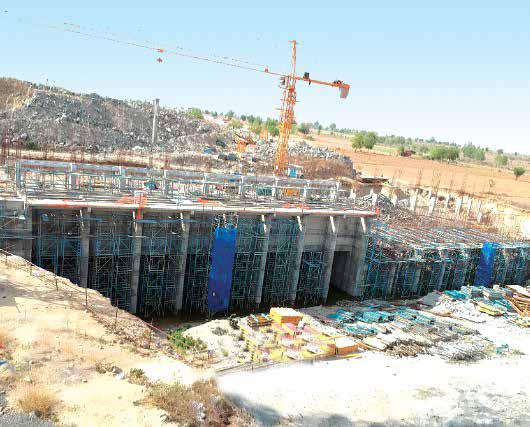
ISP Parwati Phase I & II Micro Lift Irrigation Scheme
With a range of multi-disciplinary works in line, procurement of various materials was always an issue, indicates Annamalai. “The entire SCM depended on timely procurement, issue and reconciliation of materials which was possible largely through our digital applications like BIM, GIS and M-flow. We are on track having ticked all the major milestones and in control of the deliverables with a safety record of 3.5 million safe man-hours that has been acknowledged with a slew of awards from CII, RoSPA, British Safety Council and the National Safety Council.”
Ringing in a green future for the farmers
At the ISP Parwati Phase I & II Micro Lift Irrigation Scheme, WET IC has been entrusted the mandate of raising core infrastructure to facilitate the irrigation of 1,00,000 hectares within a stringent timeline of 48 months. With huge prework involved, Project Manager, Subodh Manohar Parab’s first priority was to obtain forest and environment clearances. “We had a dedicated team responsible to obtain the statutory permissions segment wise.” The next phase involved lining up a plan for land acquisition, which involved a two phased approach, according to Rajesh Kumar Gupta, Senior Planning Incharge. “For the civil structures, we had to get final approvals while for activities like pipelaying and other associated works, we had to get a temporary approval by paying compensation to the landowners. Here, the challenge was that the alignment was running through agricultural fields and the right of way depended on aligning to the monsoon and crop cultivation seasons. However, we succeeded thanks to our digital tools like GIS & LMNOP that enabled us to precisely take over the allocations. The support of local administrators helped to secure the larger approvals such as a huge temporary land bank to execute the twin line of 3110 mm dia MS pipes with 4.5 m depth.”

“The topography was surveyed across the entire span of 2110 Sq km to finalize the design. Through aerial LiDAR technology, we plotted key project details within just two months to set the ball rolling for other tasks.”
Subodh Manohar Parab
Project Manager, ISP Parwati Phase I & II Micro Lift Irrigation Scheme
Considering the wide range of works, Subodh Manohar Parab, looked at the challenges from an execution perspective. “To begin with, the topography was surveyed across the entire span of 2110 Sq km to finalize the design. Through aerial LiDAR technology, we plotted key project details within just two months to set the ball rolling for other tasks.” On ground, the team worked a specific strategy based on the challenges of the terrain. “Wherever conditions were rocky, we put in a place a secure district wise scheme with SOPs for blasting,” mentions Rajesh Kumar Gupta.
Subodh Manohar Parab is happy that they have raised the bar when it mattered most. “The rising main and gravity main comprising MS pipeline of 3110 m dia. spanned close to 87 Km over two hills with the design of the pipeline proposed above ground level on RCC pedestals over a stiff slope. Considering the risks involved and a review by the EDRC and CMPCC teams, the scheme was redesigned to go underground thereby saving construction time and cost. Overall, we have completed close to 52% of the work and expect to deliver by September 2023.”
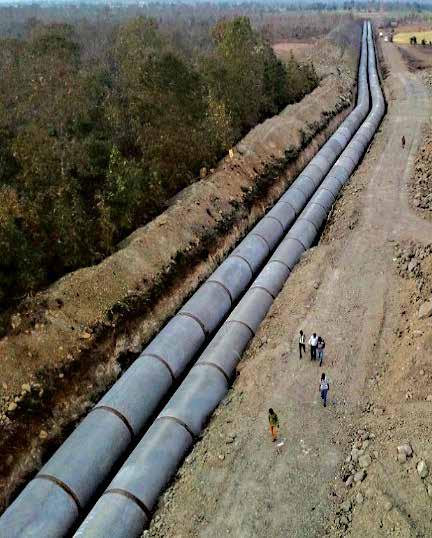
Pipe line works
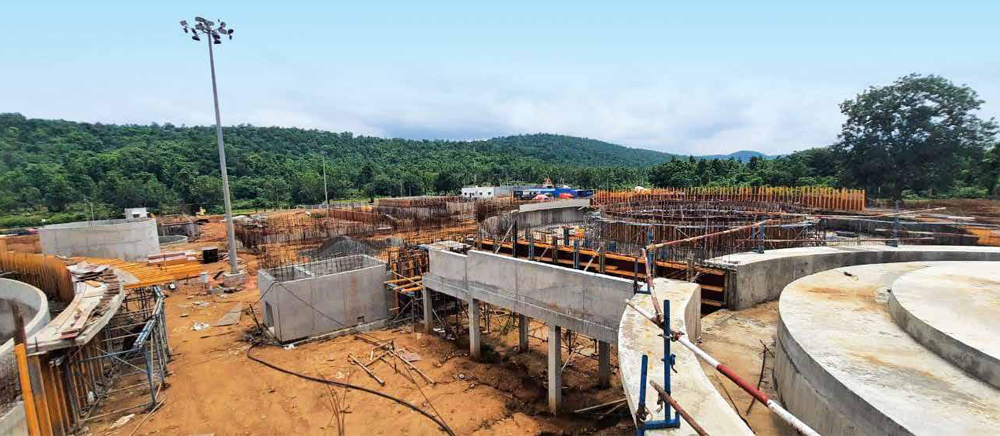
Water Treatment Plant works in progress at Keonjhar -3 PWS Project
Constructing a green channel for 918 villages
There is a sense of urgency in the eyes of Praveen Kumar, Project Manager, at the Keonjhar -3 Mega PWS Project in Odisha as he asks one of his team members for an update on the pump floor slab shuttering works. “With almost 51% of the core works completed, we are now accelerating the associated civil, pipeline and electrical works as we have to deliver potable water across a composite network to 918 villages covering 1.34 lakh household service connections.”
Like all long span water infrastructure projects, Praveen had a long list of deliverables when the job was awarded. “Our elevated scope of works included 242 reservoirs with 18m average staging along with 39 intermediate booster pumping stations, but some smart design evaluation did the trick as we convinced the client to cut the number of reservoirs to 227 based on a feasibility study while reducing the staging height to 10 m average thus reducing construction time and cost.”

“With almost 51% of the core works completed, we are now accelerating the associated civil, pipeline and electrical works as we have to deliver potable water across a composite network to 918 villages covering 1.34 lakh household service connections.”
Praveen Kumar
Project Manager, Keonjhar-3 PWS Project, Odisha
A young team gave Praveen the much-needed agility with a lot of hectic activity during the initial days. “With the intake and water treatment plants aligned along the forest area, the survey indicated more than 75 tree cuttings per hectare that required approvals from the state government.” Knowing that this was not feasible, the team found a sustainable way forward. “We redesigned the layout of the water treatment plant in line with the approval limits of the Divisional Forest Officer and secured the clearance within 3 months,” shares a satisfied R Karthick, Construction Manager, Planning (Mech).
Similarly, access for the primary alignment pipeline spanning close to 25 Km comprising clear water rising main of 900 mm and 800 mm dia DI/ MS pipes was aligned through the reserve forest area. The proposed land for diversion was about 10 Ha needing approvals from a state level committee. “To overcome this complication, we divided the total pipe alignment considering the jurisdiction of gram panchayats and applied for forest permissions, gram panchayat wise keeping the forest proposal area for pipeline less than 1 Ha. This ploy worked and in about six months’ time, the right of way was secured,” highlights Praveen.
On ground, a series of value engineering initiatives steered the course, mentions Karthick. “We standardised the container and column heights between the bracing beam for the 227 ESRs to ensure seamless execution across work fronts, implemented a 3.6 m single lift wall concrete at the intake well to eliminate construction joints and reduce construction cycle time.” With such smart work, the team has completed 7 out of the 17 structures for the water treatment plant, 20 ESRs, 7 ground level reservoirs, 7 intermediate boosting pumping stations, 801 km of clear water raising main, 2467 km of distribution network and 39,831 house service connections.
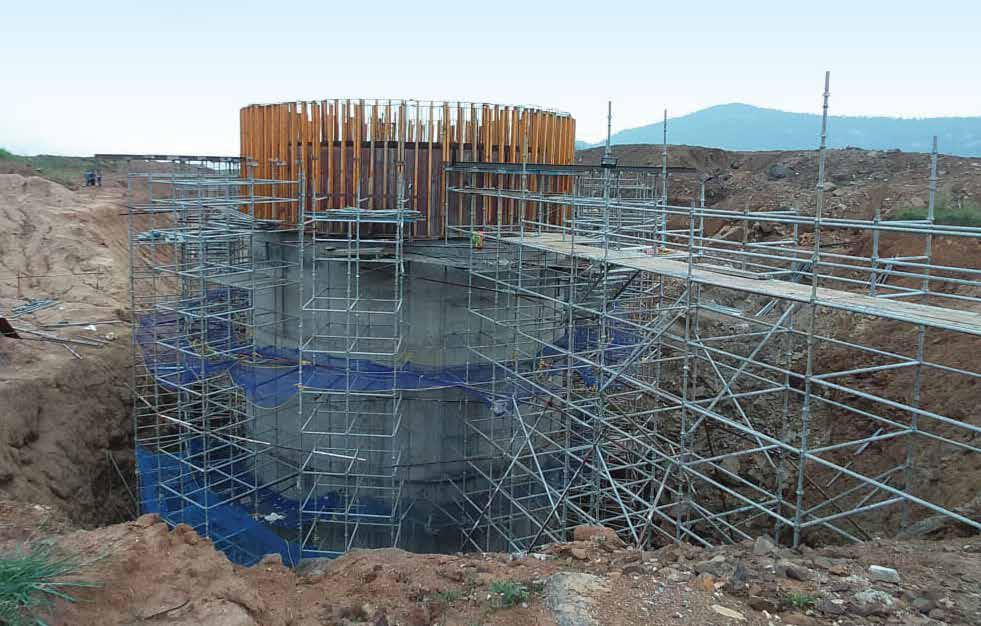
Intake well
Fusion of technology and value engineering
India’s largest sewer network at Cuttack is close to completion and a proud moment for WET IC as the project, though extremely challenging contending with a predominately high water table, has fast-forwarded with the right technology breakthroughs and value engineering initiatives by the Wastewater BU.
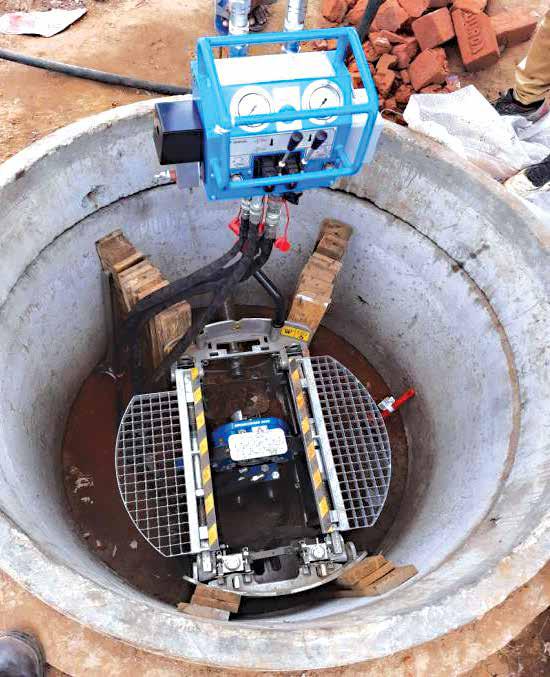
Pit Launcher
One of the oldest districts in Odisha, Cuttack has narrow streets and ancient buildings. “Changing Cuttack’s sewer lines that are an intricate maze of narrow passages was one challenge; the other was to ensure the safety of the ancient architecture that called for some deft planning on site and forethought,” mentions Manoj Rout, Project Manager. “Most of the issues were anticipated by our planning and execution teams through proactive measures. Much of our scope was changed from open to micro-tunnelling which at the time of implementation was a first-of-its-kind technology in the country.” Deploying three types of micro tunnelling machines depending on the size of the pipes and terrain, the team made steady progress across strategic junctions. For the smaller dia pipes, a compact pit launcher was installed in a manhole or a launch cradle to link the works while for the slightly larger pipes, a pilot tube machine was deployed, the pipes precisely aligned with a monitor installed inside the shaft with a theodolite. For larger cross overs, the Akkerman slurry type machine was pressed into service.
With Horizontal Directional Drilling (HDD), execution became seamless where neither open trench nor microtunneling was possible, highlights Rahul Pal, Construction Manager, (Civil). “There are several pros when installing pipelines using HDD. A major advantage is minimum impact to environment across sensitive areas such as wetlands, estuaries, rivers, and lakes. It hastened pipeline installation and enabled our operators to accomplish high accuracy even when the crossings were complicated. With continuous monitoring and control during the operations, we successfully navigated the constrained spaces between the existing utility lines.”

“We have started parallel commissioning works and expect to complete the project by December 2021. Thanks to micro tunnelling, we have successfully fast-tracked execution, project management has been quicker and easier, and efficiencies have improved immeasurably.”
Manoj Rout
Project Manager, Cuttack Wastewater project
“On course, we made more technical improvisations,” highlights Manoj Rout, “implementing systems such as specialized shoring and well point dewatering for quick progress. The use of robotics for CCTV inspection is another one-of-its-kind feature for this project. We could continuously monitor the quality of work done inside the network through a damage-resistant stainless steel camera head affixed to a long line of waterproof push cable. Surrounded with high-intensity lights, the camera head provides a clear view of the interior while a transmitter sends back images and data to a monitor. This information is recorded and later used to generate reports.”
Their hard work has reaped benefits as the project is now into the final delivery phase achieving close to 14 million safe man-hours. “We have started parallel commissioning works and expect to complete the project by December 2021. Thanks to micro tunnelling, we have successfully fast-tracked execution, project management has been quicker and easier, and efficiencies have improved immeasurably.” Manoj Rout is a mighty pleased man.
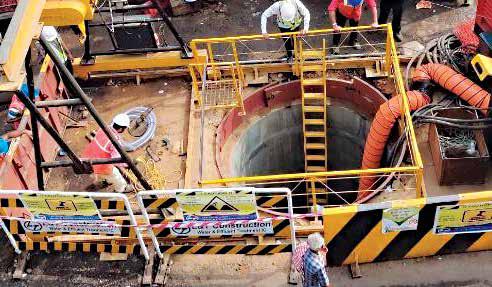
Micro-tunneling pipe jacking